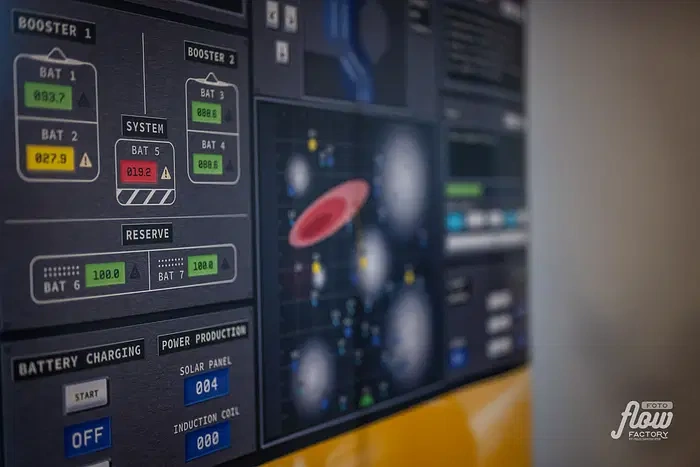Procedures are great. Until someone’s voice tightens and nobody notices.
Non-technical skills training has done a lot of good in high-stakes environments. Communication has improved, teams are more structured, and critical decisions are made with fewer errors. From operating rooms to cockpits, these frameworks have helped make complex work safer and more efficient.
And we should know. One of our directors helped bring this movement to life. He’s worked in civil aviation and the air force, helped make Crew Resource Management a standard across Europe, and led major research on group interaction in high-risk environments for the Daimler Benz Foundation. For decades, he’s trained teams that can’t afford to get things wrong.
So we’re not here to take anything away from what’s been built. We’re here because something important still slips through the cracks.
When a team completes a task and says, “Well, we followed the protocol,” there’s often something left unsaid. The structure held. The checklist was used. The decisions were sound.
And yet… someone shut down halfway through. Another teammate quietly disappeared from the conversation. Nobody addressed it at the time, but you could feel it. A bit of friction. A drop in connection. That thing people only talk about after the pressure lifts.
That’s the piece no framework covers. The part you feel before it becomes a problem.
The Quiet Gaps in Non-Technical Skills
Non-technical skills (NTS) training is essential. It teaches people how to work in sync, make decisions together, and manage complexity under pressure. It helps teams speak the same language, stay focused, and avoid common breakdowns.
But over time, we’ve noticed where it can fall short.
Most programs are built around universal behaviours. Useful, but not always personal. They tend to overlook individual differences in how people respond to stress, what motivates them, or when they start to shut down. Which is exactly where the early cracks begin.
There’s also a real gap between theory and practice. It’s one thing to learn how communication is supposed to look. It’s something else entirely to speak up clearly when you’re under pressure, someone’s shutting down, and you don’t know how to bring them back in.
Many programs stay focused on what can be observed and measured. But the deeper emotional work like fatigue, motivation, frustration and loss of trust, often stays under the radar.
And while non-technical skills help individuals perform more safely, they can’t fully account for the relational dynamics or systemic noise around them. If the team culture is already fraying, the best framework in the world won’t be enough.
So the tools are useful. The intent is solid. But the relational layer? Still fragile.
Where GemaSim Fits In
This is where GemaSim comes in. Not to replace non-technical skills training, but to give it more traction.
We use a spaceflight simulation, something no one is an expert in to bring out the human dynamics that usually stay hidden. It’s high-pressure but safe. Confusing but structured. Familiar in how people behave, unfamiliar in just about everything else.
And that’s the point.
Because when people can’t rely on their technical expertise, they have to fall back on how they relate. How they communicate, how they recover from stress, how they collaborate under uncertainty. The usual habits surface. The blind spots appear. The team dynamic gets real, fast.
And then… they get to do it again. With feedback, insight and support. That’s where growth happens. Not from perfection, but from reflection.
What You Can Actually Practice
GemaSim gives teams a space to develop the skills that protocols alone can’t deliver. The kinds of capabilities that don’t just improve performance, but make teams more resilient when things get weird.
Skills like:
- Recognising when someone is starting to disengage — even before they say a word
- Adapting to different personalities and stress reactions in real time
- Motivating people based on their internal drivers, not just the job description
- Repairing trust before it’s broken
- Managing your own emotional overload so you can lead more steadily
- Reading the atmosphere in the room, not just the checklist on the wall
These skills are subtle. They’re rarely measured. But they’re felt by everyone when they’re missing and they’re what hold performance together when the pressure kicks in.
And they don’t come from another slide deck. They come from safe, structured practice with real feedback and space to try again.
That’s what GemaSim is designed for.
What Really Keeps Teams Performing
We still need structure. We still need protocols and shared language and systems that help us coordinate under pressure.
But structure doesn’t rebuild trust after a tense conversation.
It doesn’t bring a teammate back from quiet disengagement.
And it doesn’t teach you how to read the room when the energy shifts and nobody says a word.
Those are human skills. Performance skills. And they matter just as much.
GemaSim doesn’t teach people how to tick a box or follow a checklist. It gives them a space to notice what’s happening, try something different, and get better at showing up when it counts.
Because in the end, systems might keep us organized.
But it’s the people that keep the team flying.
